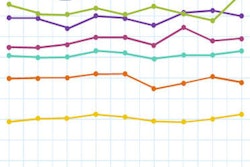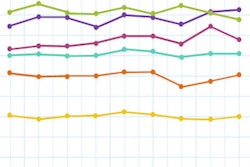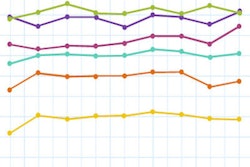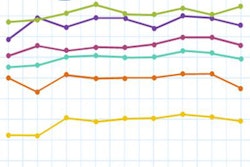
Despite the growing economy, reimbursement pressure from payors -- particularly Medicare -- continues to weigh heavily on the minds of radiology administrators and managers, according to numbers for the first quarter of 2018 in the Medical Imaging Confidence Index (MICI).
While the MICI numbers generally continued a positive trend seen since 2016, administrators and managers reported that they worry they aren't being reimbursed for imaging procedures at an adequate level -- and in some cases at a level that covers the cost of providing the services. What's more, many are seeing a lull in procedure volume, which some attribute to a reluctance by patients to spend out-of-pocket healthcare dollars in the early part of the year.
The Medical Imaging Confidence Index is derived from survey responses of imaging directors and hospital managers who are members of the AHRA, the association for medical imaging management. Market research firm the MarkeTech Group queries members of the MICI panel about five important trends faced by radiology administrators in the upcoming quarter to provide a barometer of their sentiment about near-term business prospects.
For the 2018 first-quarter data, the index included 175 participants from across the U.S., with 14% based in the Mid-Atlantic region, 15% in the South Atlantic region, 7% in the East South Central region, 22% in the East North Central region, 16% in the West North Central region, 13% in the West South Central region, 5% in the Mountain region, and 9% in the Pacific region.
Participants were asked to rate their optimism about five topics, and a single composite score including all five categories was also calculated. Scores ranged from 0 to 200 and can be interpreted as follows:
- < 50 = extremely low confidence
- 50 to 69 = very low confidence
- 70 to 89 = low confidence
- 90 to 110 = an ambivalent score (neutral)
- 111 to 130 = high confidence
- 131 to 150 = very high confidence
- > 150 = extremely high confidence
Radiology administrators were most optimistic that their internal operating and staff costs would remain constant, with a mean score of 134. They were also confident that their facility will maintain/grow as a profit center, with a score of 130, followed by confidence in their facility's ability to grow monthly in diagnostic and interventional imaging, with a score of 120.
| MICI scores by topic for Q1 2018 | ||
| Topic | Mean score | Interpretation |
| Internal operating and staff costs will remain constant | 134 | Very high confidence |
| Will maintain/grow as a profit center | 130 | High confidence |
| Will grow monthly in diagnostic and interventional radiology | 120 | High confidence |
| Composite score across all areas | 113 | High confidence |
| Will have access to capital for imaging equipment and IT needs | 102 | Neutral |
| Will receive adequate reimbursement from Medicare for diagnostic and interventional imaging | 83 | Low confidence |
MICI scores for the first quarter of 2018 and their relationship to the previous eight quarters are shown in the following chart.
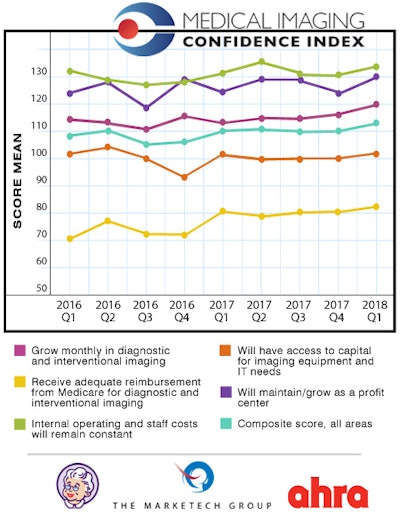
In the open response section of the survey, administrators relayed the pressure they are under to deliver profitable services while being squeezed between equipment suppliers and payors -- in spite of how well the overall economy is doing.
"The economy seems to be getting better, although insurance preauthorization continues to be a nightmare," one manager said. "Insurance is still in the driver's seat for denials on needed patient procedures, which hurt volume and patient care. Suppliers continue to charge what they want even though reimbursement for their products doesn't meet cost, and hospitals have to figure out how to pay the difference and manage a profit."
Others said that uncertainty about the status of the Affordable Care Act (ACA) has prompted some healthcare consumers to delay or even cancel their imaging procedures. Individuals often have not met their health plan's deductibles in the first months of the year, which means they won't spend money on healthcare unless it's absolutely necessary.




